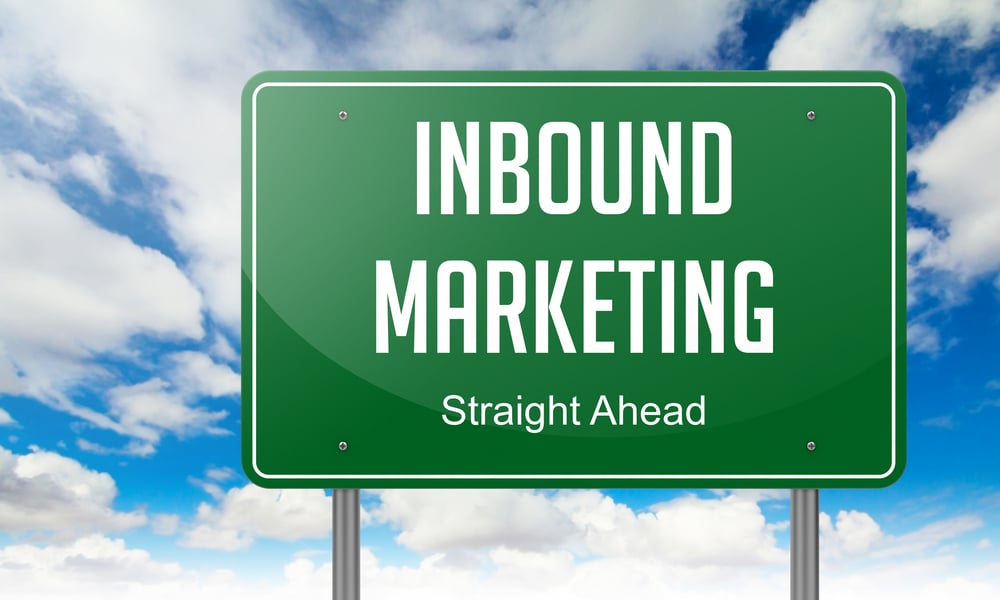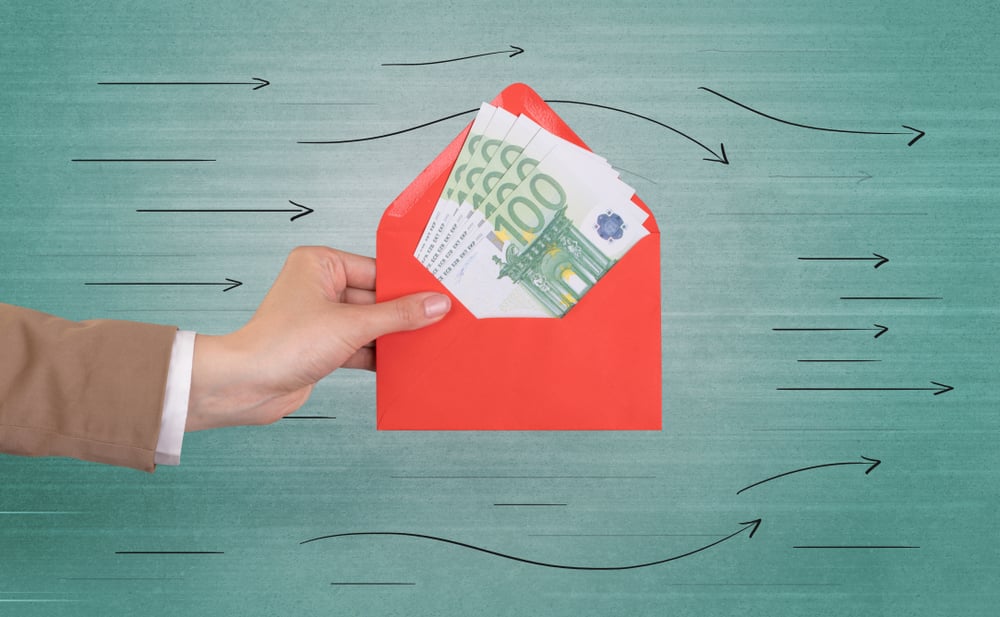Inbound Strategies vs Outbound Strategies
Inbound Marketing and Outbound Marketing are two very different marketing strategies, but which one is best for your business? Which one is the best approach to lead generation, and ultimately, revenue generation? In this definitive guide, we will compare and contrast Inbound Marketing versus Outbound Marketing to help you decide which marketing strategy is right for you.
Inbound Marketing vs Outbound Marketing
Inbound Marketing focuses on attracting customers through quality content and providing value, whereas Outbound Marketing relies on traditional advertising methods such as TV commercials, radio ads, print ads and direct response physical mail. So which marketing strategy is better? Let's find out!
First, Let's Define Our Playing Field
What is Inbound Marketing?
Inbound Marketing is a marketing strategy that focuses on attracting customers through quality content and providing value. Inbound Marketing is all about creating relationships with your customers and providing them with the information they need to make a purchase decision.

What is Outbound Marketing?
Outbound Marketing is a marketing strategy that relies on traditional interruption based advertising methods such as TV commercials, radio ads, and print ads.

Grabbing Their Attention via Interruption
Outbound Marketing is all about interrupting your potential customers with your message and hoping that they will pay attention long enough to listen to what you have to say.
Inbound vs Outbound Marketing Strategies
So which marketing strategy is better? Inbound Marketing or Outbound Marketing? The answer may surprise you! In our opinion, Inbound Marketing is the superior marketing strategy for several reasons. Inbound Marketing is more effective, more efficient, and more cost-effective than Outbound Marketing.
Let's take a closer look at each of these three factors:
Inbound Marketing is More Effective
Inbound Marketing is more effective because it allows you to build deeper relationships with your potential customers and provide them with the information they need to make a purchase decision. In contrast, Outbound Marketing interrupts your potential customers with your message while hoping that they will pay attention long enough to listen to what you have to say.

In our opinion, building relationships with your potential customers is a much more effective marketing strategy than interrupting them with unsolicited advertising messages.
Inbound Marketing is More Efficient
In addition to being more effective, Inbound Marketing is also more efficient. Inbound Marketing attracts potential customers through quality content, whereas Outbound Marketing relies on traditional advertising methods that can be expensive and ineffective. Inbound Marketing allows you to reach more potential customers with less effort and expense than Outbound Marketing.

Inbound Marketing is More Cost-Effective
Finally, Inbound Marketing is more cost-effective than Outbound Marketing. Inbound Marketing requires less money for advertising and marketing efforts, and it produces a higher ROI than Outbound Marketing. In our opinion, Inbound Marketing is the clear winner when it comes to cost-effectiveness.

What About Cold Calling?
While cold calling can be an effective marketing tactic for some businesses, it also has a number of challenges. First, it can be difficult to generate leads through cold calling. Second, even if you are able to generate leads, it can be difficult to convert them into customers. Finally, cold calling can be very time-consuming and expensive.

Cold calling can be a frustrating and stressful experience for those who have to make the calls. That's why we love Inbound Marketing. You're almost never forced to make a purely 'cold call'. Using the information available to you about what the prospect has already done on your website (or has not done), you can tailor your message to exactly match where the prospect is in their buying journey. The Hubspot Growth Suite make doing this a breeze with its contextual marketing capabilities.
Where Does Direct Mail Fit In?
Direct response mail is an ever more expensive outbound tactic. In addition to the cost of postage, direct mail also requires skilled copywriters and is thus, very expensive. Direct mail often includes an incentive, such as a discount or other financial inducement, that, if used by the potential customer, lowers your overall revenue growth and ROI.

In our opinion, direct mail is not as effective or efficient as Inbound Marketing.
Are TV Commercials and TV Ads Still an Effective Outbound Strategy?
TV commercials and TV ads can be a challenge to get consumers' attention with hundreds of channels available. In addition, YouTube provides an opportunity for users to skip ads entirely. As a result, TV commercials and TV ads may not be as effective as they once were.

What About Print Ads?
Print ads and magazine ads can be difficult to measure in terms of effectiveness. In addition, they can be expensive to produce and distribute. As a result, print ads may not be as effective or efficient as Inbound Marketing.

Where Do Trade Shows Fit Into the Buyer's Journey
Trade shows can be a great opportunity to meet potential customers and build relationships. However, they can also be very expensive and time-consuming. As a result, trade shows may not be the most effective or efficient marketing strategy for all businesses.
What Does an Ideal Marketing Strategy Look Like?
An inbound marketing strategy is very different from a traditional outbound marketing strategy. Inbound Marketing focuses on attracting potential customers through quality content, whereas Outbound Marketing relies on traditional advertising methods that can be expensive and ineffective. Inbound Marketing allows you to reach more potential customers with less effort and expense than Outbound Marketing.
What are the Key Steps to Creating an Inbound Marketing Strategy?
In order to create an effective inbound marketing strategy for your business, you need to consider your business goals and objectives and the buyer's journey. The buyer's journey is a process that potential customers go through as they move from awareness of a problem or need to the purchase of a product or service that solves that problem or meets that need.
Make a Map of Your Typical Customer's Journey
In order to create an effective marketing strategy, you need to understand where your potential customers are in the buyer's journey and create content that meets their needs at each stage.

Identify Your Target Audience
In order to do this, you need to know who your target audience is and what they are looking for. You also need to create quality content that will attract potential customers and encourage them to visit your website, for example, to receive a free Inbound Marketing guide.
Design Marketing Content for Each Stage of Your Sales Funnel
As you create more marketing content, you'll want to make sure that it's tailored to each stage of your sales funnel. Inbound marketing focuses on attracting strangers and turning them into leads, while outbound marketing focuses on converting leads into customers. By aligning your marketing strategy with your sales funnel, you can ensure that your target audience is seeing the right message at the right time.
Here's a quick overview of what to keep in mind for each stage of the sales funnel:
- Awareness: In this stage, your goal is to attract strangers and turn them into leads. To do this, you'll want to create content that educates your target audience about your product or service.
- Consideration: In this stage, your leads have already been introduced to your product or service and are now interested in learning more. In order to convert them into customers, you'll need to create content that showcases the benefits of your product or service.
- Decision: In this stage, your leads have already decided to buy from you. To seal the deal, you'll need to create content that provides a great customer experience and encourages them to take action.
Marketing professionals that create relevant content that aligns with each stage of the sales funnel can make sure that their target audience is seeing the right message at the right time.
Fuel Your Sales Funnel With Quality Content
If you want to see success with your inbound marketing strategy, it's important to create quality content that will attract and convert leads. By aligning your content with each stage of the sales funnel, you can ensure that your target audience is seeing the right message at the right time. With quality content, you can fuel your sales funnel and watch your business grow.
Quality Content Starts with a Content Plan
Creating a content plan is the first step to developing quality content. When creating your content plan, you'll want to consider what kind of content will attract and convert your target audience. Once you know what type of content you need, you can develop a strategy for creating it. To create a successful content plan, keep the following in mind:
- Who is your target audience?
- What type of content will they find valuable?
- What stage of the sales funnel are they in?
- How often do you need to produce new content?
- What is your available content production budget versus required content production budget
By keeping these factors in mind, you can develop a detailed plan for creating quality digital content that supports your inbound marketing efforts.
Where To Start Your Digital Content Planning Process?
If you're not sure where to start, there are a number of digital marketing tools and resources available to help you create a content plan that works for your business.
Some Useful Tools And Resources:
- Inbound Marketing Checklist
- Content Planning Template
- Interview Customers
- Research Online Data Sources
- Search Engine Optimization
- Google Search Console
- Google Ads Keyword Planner
- Blogging
Align Your Marketing Strategy With Your Buyer's Journey Stages
Your prospects are looking at potential solutions to problems they have identified during what Inbound Marketers call the awareness stage. Potential new customers may stay in this stage from a few weeks to a year or more.
How Can Email Marketing Fuel Your Overall Inbound Strategy?
By using email, you can 'pull' your prospects through your content marketing funnel. This approach results in a robust lead nurturing approach, that combines your content strategy with behavioral driven opt in emails. Email marketing continues to yield incredible results, often paying off at 40 to 1.
Combine Paid Ads Driven by Digital Behaviors
If your marketing budget permits, you can use the power of search engines, such as Google, to send ads tailored to prospects at each stage of the buyer's journey.
High Quality Blog Content Makes Excellent Ad Extensions
A blog post serves many purposes. And here is the difference between inbound and outbound marketing. Most marketers tend to lean heavily on ads, TV commercials and trade shows, whose effectiveness is steadily decreasing.
Send Paid Traffic to High Converting Pages
But when you write a high quality blog post, which includes a way for a prospect to convert, (such as completing a form, or running a calculator embedded right in the blog), you have a great place to send paid traffic. I don't send any traffic to a blog post unless and until it has organic traffic, a very high CTR, low bounce rate and ultimately, a high conversion rate. But once I get a blog post to perform, then, as they say, it's time to put the pedal to the metal.
Leverage Content Marketing Across All Channels - Strategically!
Each paid channel requires an approach appropriate to that channel and your target audience. A good SEO strategy will be tailored to make sure your website content is perfect for interested readers. However, when it comes to paid ads, I recommend you create dedicated blogs and landing pages, along with their associated content, for each channel.
LinkedIn is Different than Google is Different than Facebook
For instance, what you publish on LinkedIn will need to be a little different than what you use on Google Ads or Facebook. When you create content, it is often possible to make slight tweaks to your quality content so that it can be repurposed to fit each channel. This also usually means your ads work better, resulting in a lower overall ad cost, and higher overall ROI. Repurposing your content is one of the most cost effective inbound marketing tactics you can employ.
Inbound and Outbound Marketing Can Work Well Together
Though we are strong proponents of the inbound approach based on the inbound methodology, we are the first to admit that inbound and outbound marketing can and do work well together.
For many businesses in their early start-up phase, inbound tactics may be too slow. They often need to combine inbound and outbound marketing strategies. However, as a business matures, and gets some feedback from customers, those same inbound tactics will begin to pay off in spades.
Outbound Tactics Juiced by an Inbound Methodology
Outbound practices often work better when they are combined with the advanced Inbound Marketing capabilities of systems like Hubspot and their partner solutions. For example, if you're running TV commercials, which tend to result in spikey phone call patterns to your call center, you need a way to capture those calls, and failing to make the sale on the first call, enter those leads into your sales cycle. This then allows you to create targeted banner ads and other targeted digital advertising to pull them through your funnel in an inbound way.
Measurement Driven Outcomes
In these scenarios, a business needs to set quantifiable outbound marketing performance goals, and ensure measurement systems are in place to assure they are being met.
Online Marketing Driven by a Better Website Experience
A website that is driving inbound marketing traffic is one that has been designed and built with the user experience in mind. In other words, it is a website that is easy to navigate, informative, and overall enjoyable to use.
Websites that are based on outbound marketing tactics, on the other hand, are those that rely on interrupting potential customers with unsolicited messages - such as pop-up ads or banner ads.
Let Users Tell You What They Want
While outbound marketing can still be effective in certain situations, the fact remains that users are generally more receptive to messages that they have actively sought out, as opposed to those that intrude on their browsing experience.
Outbound is Tough
In addition, with the advent of ad blockers and other similar technologies, it is becoming increasingly difficult for outbound marketing messages to break through the noise and be seen by potential customers. Inbound marketing, on the other hand, relies on giving users what they want - which is valuable content that is relevant to their interests.
Quality Over Quantity
Inbound marketing also places a greater emphasis on quality over quantity. This means that rather than trying to reach as many people as possible with your marketing messages, you are instead focusing on reaching out to only those people who are most likely to be interested in what you have to offer. By doing this, you can greatly improve the chances of converting leads into customers.
Better ROI for Your Marketing Dollars
Inbound marketing offers a much better return on investment (ROI) than outbound marketing by itself does. Are you getting the most from your digital marketing efforts.
Free Inbound Marketing Assessment
One of the best ways to find out is to take our free Inbound Marketing Assessment (IMA). It's based on years of Hubspot digital marketing experience and has been used by over 100,000 Hubspot Inbound Marketing Customers. Just click the button to take your free inbound Marketing Assessment
Please Leave Us a Comment!
We hope you found this article on fueling your sales funnel with quality content helpful. We would love to hear from you in the comments below if there was a particular point that stood out to you or if you learned something new and valuable. Your comments are extremely valuable to us and other readers, as they can provide feedback and insights into what topics to cover next. So, don't be shy, let us know what else you might want to read about relevant to the topic of this blog. Remember, quality over quantity is the key to successful inbound marketing, and your feedback helps us to provide that quality content.





